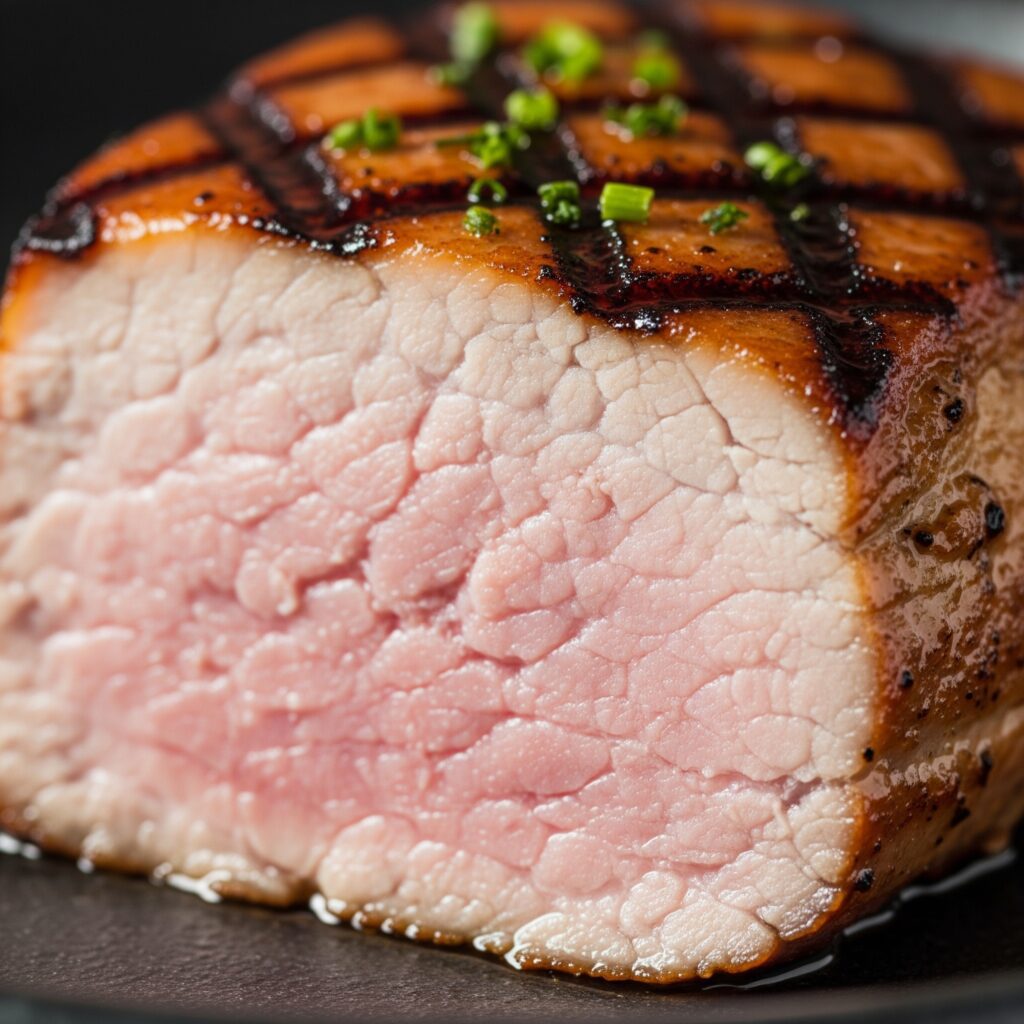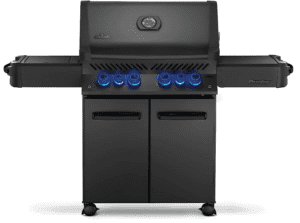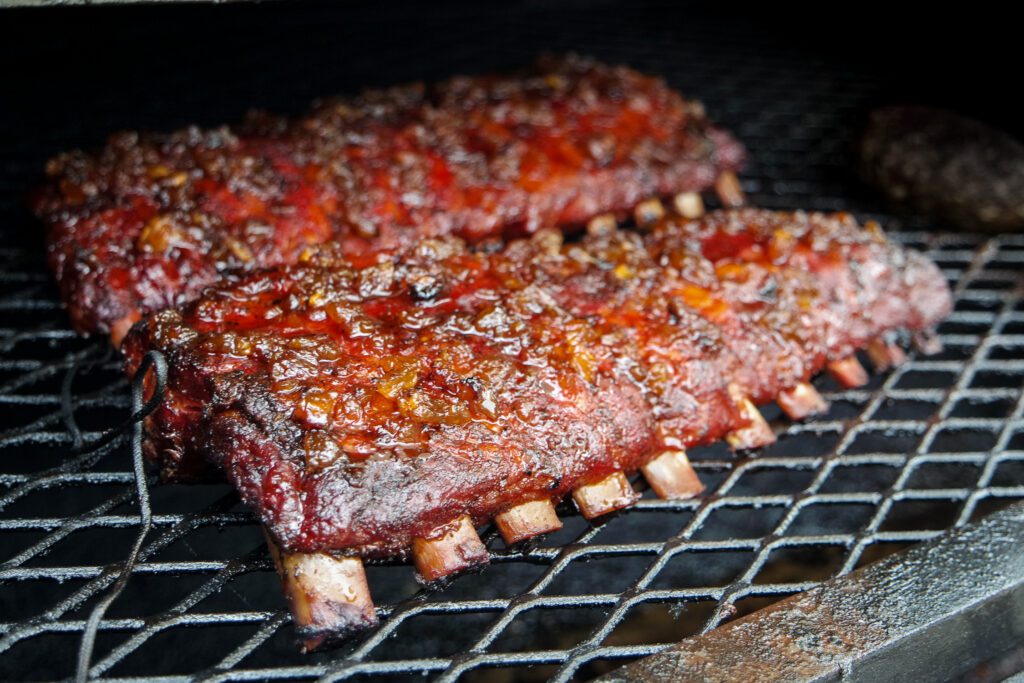How Long to Smoke Pork Tenderloin at 225°

Key Takeaways
- For smoking pork tenderloin at 225°, you want to aim for around 30 minutes per pound, but time will vary depending on the thickness of your meat, your smoker, and your weather.
- Remember, it’s always best to use a good meat thermometer and cook the pork tenderloin to 63 degrees celsius.
- Start your tenderloin preparation with fat trimming, then brine for moisture and rub or marinade to boost flavor and juiciness prior to smoking.
- Keep smoker temperature and humidity consistent by adjusting vents and using a water pan, and resist the urge to frequently open the lid, which can help you get even results.
- Experiment with reverse searing and flavor binders/herb infusions to push your smoked pork to the next level.
- Let the pork tenderloin rest after smoking, slice evenly and serve with complementary sides or sauces for a complete, enjoyable meal experience.
Smoking pork tenderloin at 225 degrees takes approximately 2-3 hours, depending on the size of the meat and the consistency of the temperature control in your smoker. Most tenderloins are only about a pound – 1 ½ pounds, so they cook through fairly quickly at this low heat. The target here is to get the internal meat temperature up to 63 degrees Celsius for safe consumption. Little differences in thickness or smoker type can move the time around a bit. A few enthusiasts prefer to a probe to monitor internal temp for optimal results. For rookie smokers, slow heat keeps the pork tender and moist, and imparts a gentle smokiness. The next segment provides steps for an easy smoking process.
Pork Tenderloin Smoking Time
Smoking pork tenderloin 225°F (107°C) depends on a few factors. No two cuts or setups are created equal, so a straightforward time guess usually requires some modification. Here are the main things to keep in mind:
- Meat weight and thickness: Thicker or larger tenderloins take more time.
- Smoker type: Electric, charcoal, or pellet smokers hold heat and smoke in different ways.
- Weather: Outdoor temperature, wind, and humidity can change your cooking time.
- Internal temperature goal: Always aim for 145°F (63°C) inside the meat.
- Pre-smoke preparation: Picking the right cut and prepping it right helps with even cooking.
1. The Time Rule
So, figure 30 minutes per pound smoking pork tenderloin at 225°F. Most standard tenderloins (around 1–2 pounds) will require around 1.5 hours, but often it can extend closer to 2 hours or even slightly more, depending on your setup. Some of my cooks have had their pork finish in as little as an hour and some have gone 2+. Due to this variability, rely on a digital meat thermometer and pull the pork only once it reaches 145°F (63°C) internally. This method ensures a secure, succulent outcome each time.
2. Meat Thickness
Take your pork tenderloin’s thickest size to schedule your cook. A fatter cut could run as long as 2 hours, a thin one might only be an hour. If you want to reduce the smoking time, cut the tenderloin into smaller pieces or medallions. For even cooking, position the thickest end near to your smoker’s heat source, encouraging it to cook through at the same pace as the thinner end.
3. Smoker Type
Your smoker impacts heat dispersion and overall cook time. Electric smokers maintain the most stable temperature, while charcoal or pellet units can fluctuate some depending on the fuel or airflow. If your smoker has a hard time holding heat, anticipate additional time needed to complete the cook. Experiment with various configurations—such as water pans or vent adjustments—to find what suits tenderloin. Always follow the meat’s internal temperature — not the clock.
4. Ambient Weather
Cold, wind, or humid air can delay your cooking or make it challenging to maintain a consistent smoker temp. Employ a windbreak or position your smoker in a protected location. If it’s really humid, your cook time might be as much as 20% higher. On still, temperate days you’ll receive more consistent results.
Weather matters.
5. Pre-Smoke Steps
Know the difference: pork tenderloin is lean, small, and cooks quickly, while pork loin is bigger and takes longer. Tenderloin’s fine texture lends itself nicely to quick, low & slow smoking, and its mild flavor absorbs smoke flavor effortlessly. Choose this cut when you’re after a quick, tender outcome.
Tenderloin Versus Loin
Pork tenderloin and pork loin come from different parts of the pig and each offers a distinct flavor experience to your plate. Tenderloin, as the name suggests, is lean and small, which is why it’s a favorite of healthy-minded chefs. Its low fat content means it dries out quickly if not monitored, therefore it requires attentive care. Brines or marinades go a long way to keep it moist, and pairing with sauces or glazes does wonders to bolster its subtle flavor.
The Lean Cut
Pork loin is special because it’s larger than tenderloin, commonly weighing 1.5 to 2 pounds a piece. This size makes it a great candidate for slow roasting or smoking when you need to feed a crowd. Loin may be less tender than tenderloin, but it frequently adds a more robust flavor to the plate. It’s not as tender as tenderloin, so it can withstand longer cooking and bolder seasonings.
Pork loin also cooks longer than tenderloin. Smoking a pork loin typically takes 2 to 4 hours at 107°C, vs. 1.5 for a tenderloin. For the tastiest results, most cooks apply a dry rub or marinade. It’s this added step that lets the meat stay juicy and makes for that wonderful flavor and texture on the outside. If you’re not pressed for time, brining the loin overnight will make a world of difference in tenderness and flavor.
The Roasting Cut
Picking the right cut for smoking makes a difference if you want quality results. Tenderloin when you need something tender and quick. Loin is better if you’re in the mood to marinate and desire a more robust taste.
Understanding the distinctions between these cuts helps you schedule your cooking duration and taste plan. If your guests are into leaner meat, opt for tenderloin. If they like something with more bite and a richer flavor, chose loin. Mastering these basics allows you to cook with flair and tailor the dish to your guest’s requirements.
Why It Matters
First trim any excess fat from the pork tenderloin. This prevents it from cooking uneven and helps maintain the texture just right. For extra flavor and moistness, brine before smoking.
Choose a dry rub or marinade you enjoy to really bring up the flavor. Allowing the seasoned meat to rest before you smoke it lets those spices soak in. You should ALWAYS take the internal temperature—pull at 63°C or you’re overcooking.
Essential Preparation
Preparation starts with care. The right trim, brine, seasoning and smoker prep are what separate dried out, tasteless pork from a succulent feast. All of these steps count to make sure the pork tenderloin smokes perfectly and delicious.
Trimming
Trim the pork tenderloin, removing the silver skin and any thick fat with a sharp knife. Leave a thin fat cover, about 6 mm, to retain moisture. Ensure that they are all the same shape and size for even cooking — to avoid some drying out while others are still undercooked.
Brining
Brining helps keep the pork juicy and flavorful, which is particularly essential for lean cuts like tenderloin. Mix water, kosher salt and sugar as the foundation—grab a kitchen scale to keep ratios spot on. For extra flavor, toss some bay leaves, peppercorns, or garlic into the brine. Soak the trimmed tenderloin 8 to 10 hours, but never more than 16. Rinse the pork well to prevent it from being too salty, and pat dry prior to seasoning.
Seasoning
Sprinkle with dry rub or BBQ seasoning all over the tenderloin for a punchy flavor base. Combine black pepper, smoked paprika, garlic powder, and onion powder for an evenly balanced flavor – add more if you like. Lightly brush with mustard or olive oil to help the spices adhere, then coat each side. Allow the seasoned pork to rest for a minimum of 30 minutes prior to smoking. This gives the flavors a chance to permeate and the rub time to adhere to the meat.
Setting Up the Smoker
Preheat your smoker to 107°C (225°F) prior to introducing the pork. Install it according to your model’s manual, to maintain a consistent temperature. Put the tenderloin in and monitor the temperature with a meat thermometer. The target is an internal temp of 63°C (145°F), cook to this number, not time, for safety and tenderness.
The Smoking Process
Smoking pork tenderloin at 107°C (225°F) requires slow, gentle heat and constant moisture. The idea is to hold the meat juices, slowly layer flavor, and not overcook this lean cut. Begin by repositioning the smoker grates to ensure air circulates not only underneath the pork but all around it. A water pan beneath the meat maintains humidity and prevents the pork from drying out. ALWAYS place the tenderloin off direct heat for indirect cooking, which prevents burnt spots. Ensure the smoker lid fits tight to retain smoke and stable heat.
Smoker Setup
Choose wood that pairs nicely with pork. Hickory and applewood are both surefires, but peach or cherry wood are sweet additions. Experiment with combining fruit woods with hardwoods to even out smoke intensity. For instance, mix apple and hickory chips for a mild, not-so-strong profile.
Soak wood chips for at least 30 minutes prior to adding them to the smoker. This assists in forming a more even smoke and keeps the chips from going up in flames too quickly. Play with different wood types or blends to complement your taste or compliment sides/sauces you’re serving.
Wood Selection
Consult a trusted meat thermometer or, even better, a dual-probe smoker-to-meat temperature system. Maintain your smoker at 107°C (225°F) by opening and closing vents to control the airflow. Close the lid as much as possible. Every time you open it, heat and smoke escape, which can extend the cook and risk a stall—when the meat’s internal temp plateaus.
Keep an eye on your smoker’s temperature gauge. If you catch the stall dragging on, a little bump in heat can assist, but don’t let it go so high you dry the pork out. You can cook at higher heat, say 204°C (400°F), to quicken things, but you risk drying it out.
Temperature Control
Adding moisture is the magic. Add a water pan, mist the pork with apple cider vinegar or apple juice or baste with broth. This keeps the tenderloin from drying out.
Keep an eye on moisture as you proceed. Spritzing contributes a bit of acidity, and broth or juice will introduce subtle flavor layers.
Moisture
Try reverse searing to achieve a crisp, browned crust after slow smoking. Take a cue from barbecue and apply a thin layer of mustard or oil to bind seasonings — we find that the rub really sticks and bakes into the surface. Toss in fresh herbs such as rosemary or thyme for added fragrance. A little marinade before smoking can really enhance flavor and tenderness.
Advanced Flavor Techniques
Smoking pork tenderloin at 107C is about more than time and temperature. Advanced flavor techniques help bring out the best in this lean cut. Every phase, from seasoning to smoking, adds dimension in flavor, texture and aroma. Here are 4 ways to make your pork tenderloin go from basic to bold.
Reverse Searing
A light layer of mustard or oil assists dry rubs to adhere. This little trick holds spices on the meat, ensuring flavor persists through the smoke and searing processes.
Experiment with various binders — yogurt, hot sauce or even honey. Each adds a fresh spin to the crust and can complement various spice profiles. Slather the binder all over the meat so you get flavor in every bite. Let it set up a few minutes before putting on your rub. This assists the spices in locking in during the long, slow cook.
Flavor Binders
Fresh herbs provide a punchy, aromatic accent. Lay thyme, rosemary or sage sprigs under the pork in the smoker. As it simmers, the herbs emit oils, which seep into the meat from beneath.
Stuffing the tenderloin with baby spinach, almond slices or even sausage can enhance flavor AND texture. Slice her open, stuff her and bacon weave the smokey wrapper. Sprinkle with a spice mix that complements your herbs and fillings—say smoked paprika, garlic powder, or cracked pepper. This creates a rich, multi-dimensional flavor that really shines post-smoking.
Add a pan of apple juice or chicken broth in the smoker to keep the meat moist. That imparts a sweet note to the pork as it smokes low and slow.
Herb Infusions
Resting the pork for a minimum of 10–15 minutes is key. This resting period allows juices to redistribute into the meat, so it remains moist once sliced.
Just be sure to always use a sharp knife and cut against the grain. This cooks the slices tender, not chewy. Accompany with easy sides and a sauce such as chimichurri or barbecue to provide balance.
Final Steps
Refrigerate leftovers in a sealed container. Reheat gently to retain moisture. Serve alongside fresh greens or grains. Experiment with smoked pork in wraps or salads.
Post-Smoke Perfection
Resting pork tenderloin after smoking is more than just a break. It’s the crucial step that seals in moisture, optimizes flavor distribution, and results in a superior meal. Wrapping the smoked meat loosely with foil keeps it warm and prevents steam from ruining the bark. Let the tenderloin rest for about 30 minutes—this allows juices to redistribute throughout the meat, so each slice remains juicy. Letting it rest before cutting prevents the interior from drying out.
The Resting Period
Don’t slice the pork tenderloin right after cooking. Steam and juice seep out quick if you slice it hot. You’ll want to rest the meat, under foil, for 30 minutes after pulling it off the smoker. This allows the heat to disperse and the juices to re-enter the muscle fibers. In the meantime, you can prepare sides—roasted vegetable, mashed potatoes, or even fresh fruit salsa. The wait is worth it for every delicious bite.
Proper Slicing
As a general rule, always slice rested pork tenderloin with a sharp knife. A sharp blade cuts like a razor and makes clean edges. For optimal results, slice the tenderloin into uniform pieces—around 1.3 centimeters (1/2 inch) thick. This scale makes the meat juicy and manageable to carve, either on a communal serving tray or individual plates. Even slices not only look nicer, but regulate portions.
Serving Ideas
Complement your smoked pork tenderloin with sides such as grilled vegetables or mashed potatoes for a complete dining experience. Or go with sandwiches or sliders using the sliced pork, which is perfect for casual get-togethers. A drizzle of BBQ, fruit chutney or even a light glaze can enhance the smoky goodness. Sliced tenderloin plays nicely with salads or rice bowls, so you’re covered for any meal.
Final Thoughts
Smoke the pork tenderloin at 107°C (225°F) for 1½ to 2 hours, on a rack to allow airflow, using hickory or apple wood chips, and you get tender, juicy meat. The right rub, careful temp checks—shooting for 63°C (145°F) inside—and proper resting all count. Feel free to play with spices or sauces and report back to the group!
Conclusion
Get the smoker set up, monitor the heat and cook slow. Most cuts cook in around 2 hours, but always check by temp, not just time. Slice for juicy bites and serve with a simple side, like grilled veggies or rice. Experiment with apple or cherry wood for a touch of sweet smoke. Cut thick or thin, depending on your preference. Simple twists–such as a dry rub or glaze–can add new flavors without too much effort. Leave your best tips or questions below! Exchange tips, strut your stuff, and stay hungry for knowledge — together. Real growth comes from getting a shot, sharing and querying what works best for you.
Perfectly Cooked Air Fryer Pork Tenderloin| How Long to Cook Pork Tenderloin in Air Fryer 2025
Frequently Asked Questions
How long does it take to smoke pork tenderloin at 225°C?
Always test for that internal temperature to 63°C for safe eating.
What is the ideal internal temperature for smoked pork tenderloin?
They want to be cooked to an internal temperature of 63°C. Let the tenderloin rest a few minutes before slicing for juicy, safe pork.
Is pork tenderloin the same as pork loin?
No, pork tenderloin and pork loin are separate cuts. Tenderloin is small and cooks quickly, loin is larger and requires additional smoking time.
Should I marinate pork tenderloin before smoking?
Suggest marinating. It adds flavor and keeps the meat moist while smoking. Even a coupon spice rub can make a dent.
Do I need to wrap pork tenderloin in foil while smoking?
Wrapping is up to you. It can be great for moisture retention during longer smokes, but is not necessary for a tenderloin smoked at 225.
Can I use wood chips for extra flavor when smoking pork tenderloin?
Yeah, wood chips give it a smoky flavor. Common favorites are apple, cherry, or hickory. Apply sparingly for best effect.
How do I keep smoked pork tenderloin juicy?
Don’t over cook. Pull the tenderloin when it hits 63C internal. Allowing it to rest prior to slicing assists in keeping it juicy.


0 Comments